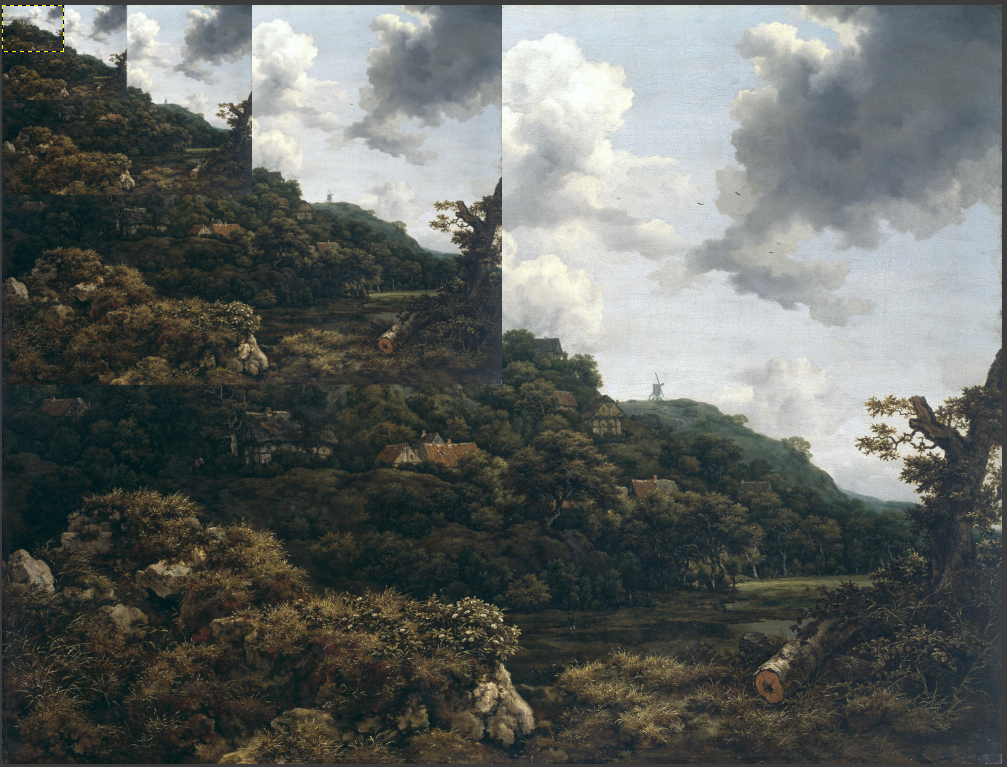Performance considerations
View SourceInput
The performance is greatly improved if you provide your images in more than one resolution. This can be accomplished by providing image pyramids. Using vips8 you can generate a TIF file pyramid:
vips tiffsave input.jpg output_pyramid.tif --compression deflate --tile --tile-width 256 --tile-height 256 --pyramid
The same can be achieved in Elixir with Vix:
{:ok, file} = Image.new_from_file("input.jpg")
Operation.tiffsave(file, "output_pyramid.tif",
pyramid: true,
"tile-height": 256,
"tile-width": 256,
tile: true,
compression: :VIPS_FOREIGN_TIFF_COMPRESSION_DEFLATE
)This will generate a single file that contains multiple pages of decreasing resolution:

The IIIF Image plug will automatically evaluate these pages and select the best matching for the requested scaling operation - thus avoiding to work on the full scale image where possible.
Output
Some image formats can not be streamed directly and are written to a temporary file by default, see the documentation for the IIIFImagePlug.V3.Options module.
Alternatives to this library
The plug aims to implement the "level 2" compliance for the IIIF image API.
If you only want to provide "level 0" data (the most basic required for tiled viewers), you can preprocess your input images beforehand and serve them as static assets (without any specialized library necessary at runtime).
There exist several resources on how to do this.
Running vips:
vips dzsave input.jpg preprocessed_out --layout iiif3 --depth onetile --overlap 0 --suffix .jpg
This will create a directory "preprocessed_out" that contains a bunch of directories (each corresponding to a possible "region" parameter) and a basic info.json file. These can then be served as static assets.
Again, Vix provides the same functionality in Elixir with Vix.Vips.Operation.dzsave/3.